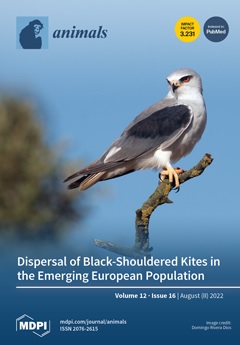View Item
- xmlui.general.dspace_homeCentros Regionales y EEAsCentro Regional Buenos Aires SurEEA Hilario AscasubiArtículos científicosxmlui.ArtifactBrowser.ItemViewer.trail
- DSpace Home
- Centros Regionales y EEAs
- Centro Regional Buenos Aires Sur
- EEA Hilario Ascasubi
- Artículos científicos
- View Item
Is Dairy Effluent an Alternative for Maize Crop Fertigation in Semiarid Regions? An Approach to Agronomic and Environmental Effects
Abstract
The reuse of effluents from intensive dairy farms combined with localized irrigation techniques (fertigation) has become a promising alternative to increase crop productivity while reducing the environmental impact of waste accumulation and industrial fertilizers production. Currently, the reuse of dairy effluents through fertigation by subsurface drip irrigation (SDI) systems is of vital importance for arid regions but it has been poorly studied. The
[ver mas...]
The reuse of effluents from intensive dairy farms combined with localized irrigation techniques (fertigation) has become a promising alternative to increase crop productivity while reducing the environmental impact of waste accumulation and industrial fertilizers production. Currently, the reuse of dairy effluents through fertigation by subsurface drip irrigation (SDI) systems is of vital importance for arid regions but it has been poorly studied. The present study aimed to assess the greenhouse gas (GHG) emissions, soil properties, and crop yield of a maize crop fertigated with either treated dairy effluent or dissolved granulated urea applied through an SDI system at a normalized N application rate of 200 kg N ha−1. Fertilizer application was divided into six fertigation events. GHG fluxes were measured during fertigation (62-day) using static chambers. Soil properties were measured previous to fertilizer applications and at the harvest coinciding with crop yield estimation. A slight increase in soil organic matter was observed in both treatments for the 20–60 cm soil depth. Both treatments also showed similar maize yields, but the dairy effluent increased net GHG emissions more than urea during the fertigation period. Nevertheless, the net GHG emissions from the dairy effluent were lower than the theoretical CO2eq emission that would have been emitted during urea manufacturing or the longer storage of the effluent if it had not been used, showing the need for life-cycle assessments. Local-specific emission factors for N2O were determined (0.07%), which were substantially lower than the default value (0.5%) of IPCC 2019. Thus, the subsurface drip irrigation systems can lead to low GHG emissions, although further studies are needed.
[Cerrar]

Author
Lombardi, Banira;
Orden, Luciano;
Varela, Patricio;
Garay, Maximiliano;
Iocoli, Gastón Alejandro;
Montenegro, Agustín Rodrigo;
Sáez-Tovar, José;
Bustamante, María Ángeles;
Juliarena, María Paula;
Moral, Raúl;
Fuente
Animals 12 (16) : 2025 (August 2022)
Date
2022-08
Editorial
MDPI
ISSN
2076-2615
Documentos Relacionados
Formato
pdf
Tipo de documento
artículo
Proyectos
(ver más)
INTA/2019-PD-E2-I518-002/2019-PD-E2-I518-002/AR./Estudio del impacto ambiental, gestión y tratamiento de residuos y efluentes sobre sistemas agropecuarios y agroindustriales para su valorización agronómica
Palabras Claves
Derechos de acceso
Abierto
 Excepto donde se diga explicitamente, este item se publica bajo la siguiente descripción: Creative Commons Attribution-NonCommercial-ShareAlike 2.5 Unported (CC BY-NC-SA 2.5)
Excepto donde se diga explicitamente, este item se publica bajo la siguiente descripción: Creative Commons Attribution-NonCommercial-ShareAlike 2.5 Unported (CC BY-NC-SA 2.5)


